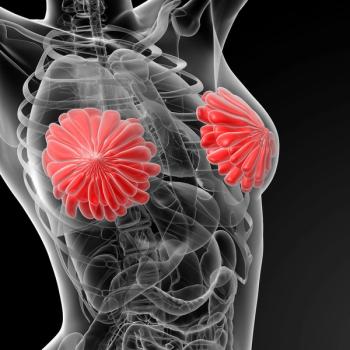
Oncology NEWS International
- Oncology NEWS International Vol 8 No 12
- Volume 8
- Issue 12
Role of Preoperative Chemotherapy in Breast Cancer Unclear
BUFFALO, NY-The role of preoperative chemotherapy in breast cancer treatment is still being debated, according to speakers at the Surgical Oncology Symposium hosted by Roswell Park Cancer Institute.
BUFFALO, NYThe role of preoperative chemotherapy in breast cancer treatment is still being debated, according to speakers at the Surgical Oncology Symposium hosted by Roswell Park Cancer Institute.
Although research shows some improvement for certain stages of disease with use of preoperative chemotherapy, it may not be the best treatment option for every woman, the speakers stressed. More research is needed to clarify how this sequence of treatments works, how to optimize the agents used, how to best assess response, and how to determine when preoperative chemotherapy is the best treatment option.
The role of preoperative chemotherapy for operable breast cancer is to decrease the size of the primary tumor [Figure 1] and to address micrometastases before surgery, said Harry Bear, MD, PhD, chairman of the Division of Surgical Oncology, Virginia Commonwealth University.
Although it can be used to make breast conservation more feasible for some women with large tumors, Dr. Bear does not believe it should be used routinely. Preoperative chemotherapy may cause us to under-treat some women by downstaging lymph nodes or may lead to overtreatment of other women whose nodes are negative at the time of diagnosis, he said.
Although many studies support the use of preoperative chemotherapy for breast cancer, the exact pattern of tumor shrinkage is unclear (Figure 2). If we are not shrinking the tumor down completely, but only making the edges of it more indistinct, then lumpectomy in these patients may be associated with higher than usual local recurrence rates, Dr. Bear commented.
The use of preoperative chemotherapy might actually eliminate surgery in some women, said S. Eva Singletary, MD, chief of the Surgical Breast Section at M.D. Anderson Cancer Center. If we can get a complete response in the breast tissue with chemotherapy, does the patient need to go to the operating room at all? she asked. Research at M.D. Anderson has shown that in women with a good response to chemotherapy, the primary tumor may disappear.
Two sets of mammograms are needed in these patients, one before treatment in which the tumor is highlighted with a radiographic marker and one after treatment. The clips help us look at the site where the tumor was, and often we see that it is gone, Dr. Singletary said. These clips then guide the surgeon to the area that needs to be excised to make sure that no viable tumor is present microscopically.
Articles in this issue
about 26 years ago
SWOG to Study Docetaxel/Estramustine in Advanced Prostate Cancerabout 26 years ago
US Smoking Rates No Longer Falling, Due to More Young Smokersabout 26 years ago
Americans Favor Higher Cigarette Tax to Balance the Budgetabout 26 years ago
Saint Vincents Hospital Opens Comprehensive Cancer Centerabout 26 years ago
New Breast Biopsy Techniques Allow ‘One-Stop’ Proceduresabout 26 years ago
Director of NCI Mentioned as a Candidate to Head NIHabout 26 years ago
Challenges in Designing Chemoprevention Trialsabout 26 years ago
Black Women Underrepresented in Breast Cancer Trialsabout 26 years ago
UnitedHealthcare Plan Gives Physicians Final Say on Careabout 26 years ago
New Agents, Sequential Schedules Hold PromiseNewsletter
Stay up to date on recent advances in the multidisciplinary approach to cancer.

















































































